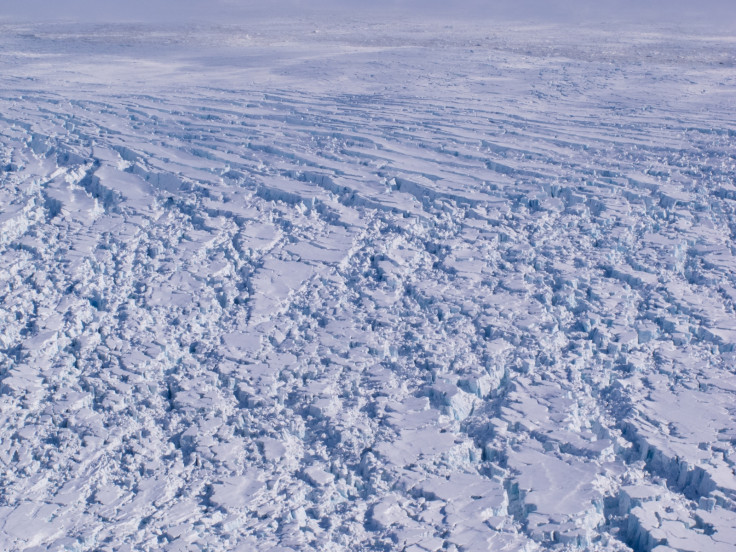Arctic ice cap thins by 50 metres in two years, flows at tremendous speeds

Satellite images show that a remote Arctic ice cap has thinned by about one sixth of its original thickness in two years and is now flowing 25 times faster.
A team led by scientists from the Centre for Polar Observation and Modelling (CPOM) at the University of Leeds combined data from eight satellite missions, including Sentinel-1A and CryoSat, with results from regional climate models, to reveal an ice loss of more than 50 metres since 2012.
The south-east region of Austfonna, located in the Svalbard archipelago, has seen ice thinning spread more than 50 km inland in the last two decades. In this time, ice flow has accelerated to speeds of several kilometres per year.
"These results provide a clear example of just how quickly ice caps can evolve, and highlight the challenges associated with making projections of their future contribution to sea level rise," said the study's lead author Dr Mal McMillan, a member of the CPOM team from the University of Leeds.
The study, published in Geophysical Research Letters, is the first to make use of measurements from ESA's latest Earth observation satellite, Sentinel-1A.
Sentinel-1A was launched in April last year.
The satellite data is expected to help scientists determine the exact amount of ice loss. Long-term observations by satellites are key to monitoring climate-related phenomena in the years to come.
"Glacier surges, similar to what we have observed, are a well-known phenomenon," said Professor Andrew Shepherd from the University of Leeds, the Director of CPOM.
"However, what we see here is unusual because it has developed over such a long period of time, and appears to have started when ice began to thin and accelerate at the coast."
While there is evidence that the surrounding ocean temperature has increased in recent years, the link between warmer ocean water and ice cap behaviour will have to be established by ice flow models, the team said.
Loss of Arctic sea and its effects on the polar bears have been noticed of late. The Canadian Arctic Archipelago, home to 20% of the world's polar bears, which usually has sea ice throughout the year, is beginning to shed ice thanks to global warming.
By 2070, more than 80% of the archipelago's ice could break up by July each year, predict studies.

© Copyright IBTimes 2025. All rights reserved.





















